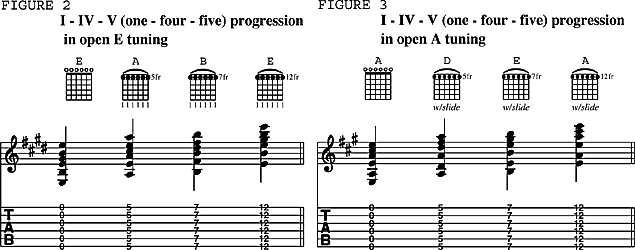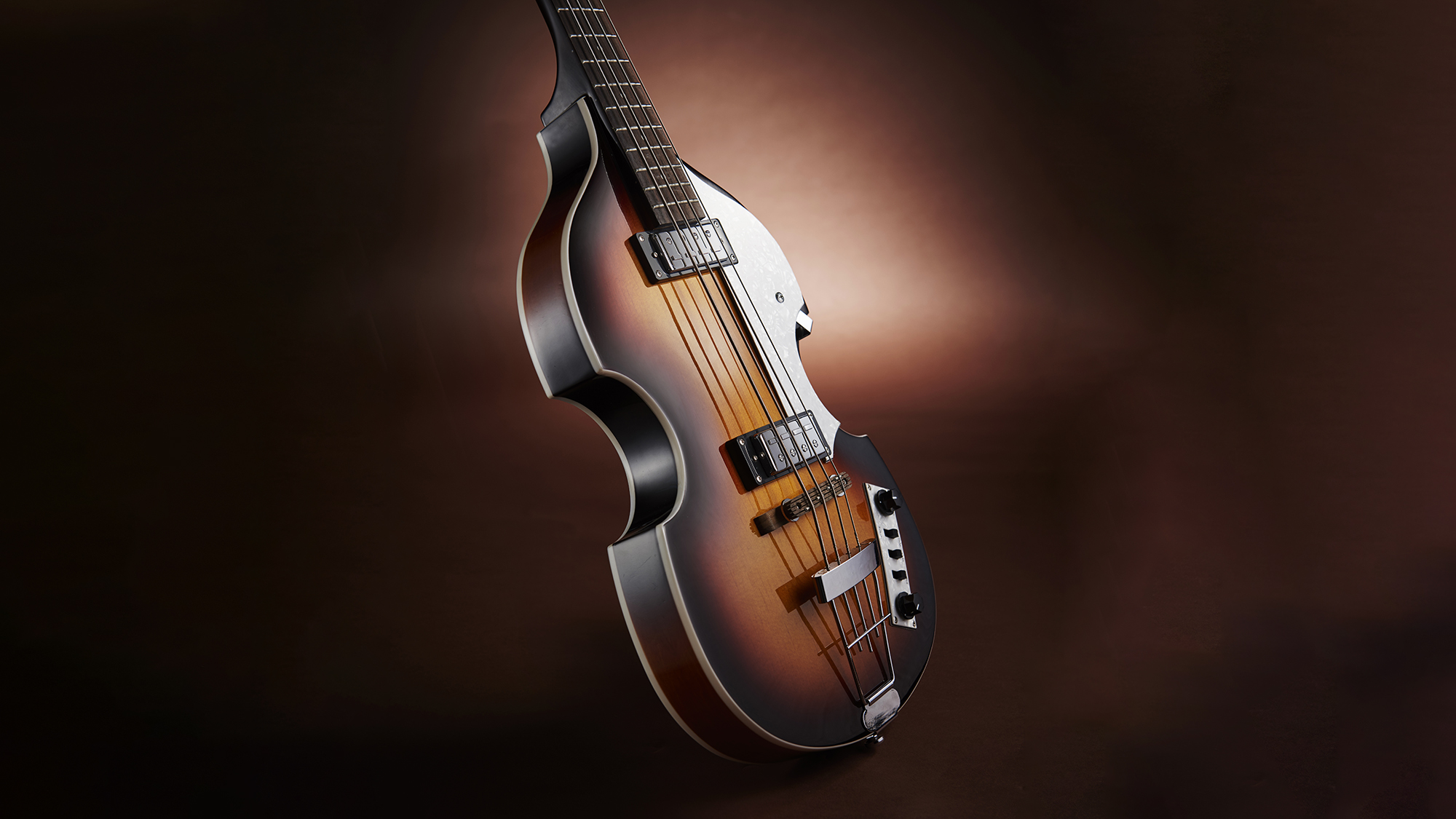Jam Session: Warren Haynes on Getting Started With Slide Guitar

This column comes from Warren Haynes' classic Guitar World column, "Jam Session."
When I first started to play slide guitar, I would play in standard tuning. I soon discovered that many slide guitarists tune their strings to form a chord, such as D (low to high: D A D F# A D), E (E B E G# B E), G (D G D G B D) or A (E A E A C# E).
These are the most widely used tunings for slide playing. Each one enables you to form a major chord anywhere on the neck by simply positioning the slide directly over any particular fret. Of course, you could also form a major chord by barring your index finger across the strings behind any given fret.
FIGURES 1a and 1b illustrate how to get from standard tuning to open E and open A tunings, respectively.

Let’s start by familiarizing ourselves with some standard chord forms in open E tuning. Standard 12-bar blues is often referred to as a “I-IV-V” (one-four-five), because the progression uses the one chord, the four chord and the five chord of whatever key you’re in. In the key of E, E (major) is the I (one) chord, A is the IV (four) chord and B is the V (five) chord.
FIGURE 2 illustrates these chords played in open E tuning. As you can see, the IV chord, A, is formed by barring a single finger across all of the strings at the fifth fret, and the V chord, B, is produced by barring at the seventh fret. Another E chord is formed by barring at the 12th fret.
Now let’s try the same thing using a slide. First, you’ll need to decide on which finger of your left hand you wish to “wear” the slide. Most slide players wear the slide on either their middle, ring or pinkie finger. Johnny Winter, Lowell George and Ry Cooder use their pinkies; Duane Allman wore the slide on his ring finger, which is the finger that Derek Trucks and I use; and Bonnie Raitt and Ronnie Wood use their middle fingers. Each finger has its own advantages and disadvantages, so you need to experiment with each one and decide which finger works best for you.
All the latest guitar news, interviews, lessons, reviews, deals and more, direct to your inbox!
Once you’ve figured this out, you’ll need to find a slide that fits your finger comfortably. It shouldn’t be too tight or too loose—just snug enough so that it won’t move around too much. The other decision you’ll need to make is whether to use a glass slide or a metal slide. I’ve used both, and my preference is to use the original glass Coricidin bottles (Coricidin was a cold medication no longer available), which is the type of slide Duane used.

When placing the slide against the strings, it should be directly above and parallel with the given fret. Apply even pressure with the slide so that it lightly presses against all of the strings. The strings should not come in contact with the frets, so make sure you don’t press them down too far. Lightly lay any remaining fingers that are behind the slide—between the slide and your guitar’s nut—across the strings. Your ring, middle and index fingers should lay lightly across the strings. “Damping” the string like this will help eliminate unwanted overtones and will allow the notes and chords you play with the slide to sound clearer.
In open E tuning, an A chord can be sounded by laying the slide across all of the strings directly above the fifth fret. Likewise, a B chord is sounded by positioning the slide above the seventh fret and the high E chord is sounded by moving the slide up to the 12th fret. When playing slide, always keep in mind that, unlike conventional fretting, in which you push the string down behind the fret with one of your fingers, the slide should be positioned directly over the fret (that is, unless you intentionally want to go below or above the pitch of the intended note). If the slide is not directly above the fret, or is not parallel to it, at least some of the notes you’re playing will be improperly intonated, which means they’ll sound out of tune and sour. Again, sometimes experienced slide players intentionally do this for dramatic effect. My advice, though, is to strive for good intonation when starting out.
Now let’s try doing the same thing with the slide in open A tuning, as shown in FIGURE 3. In the key of A, A is the I chord, D is the IV chord and E is the V chord. In open A tuning, an A chord is sounded either by strumming all of the open strings or laying the slide against the strings at the 12th fret and strumming them; a D chord is sounded by positioning the slide at the fifth fret; and an E chord is sounded by moving it up to the seventh fret. One thing to keep in mind when using open A tuning is that, unlike open E tuning, in which the root note of each chord is on the sixth string, the root note is on the fifth string. Unless you intentionally want to have a fifth of the chord on the bottom of the voicing, you may want to strum the top five strings when playing chords in open A tuning.
Next time, we’ll begin investigating a handful of the standard blues licks used by virtually all slide guitar players. See you then.
